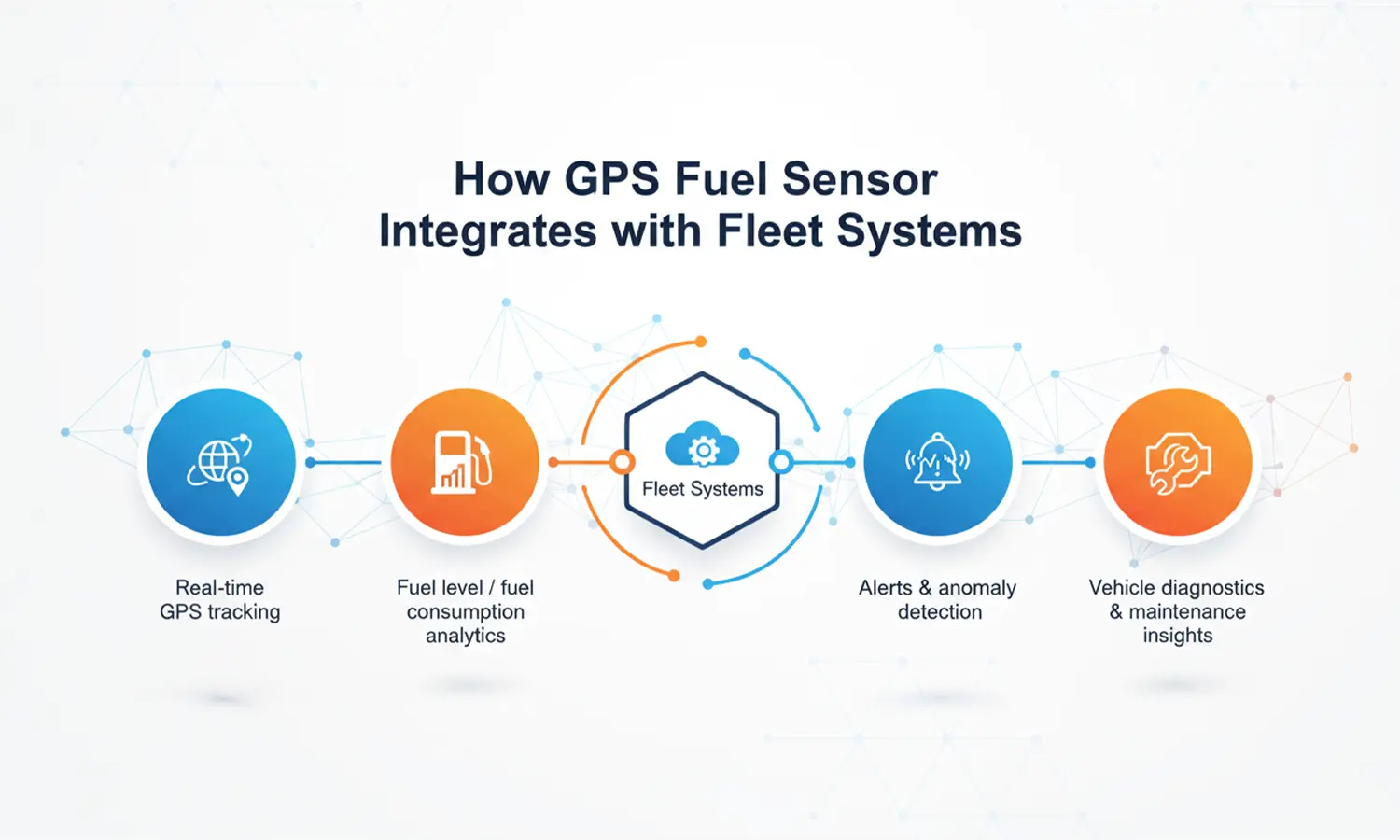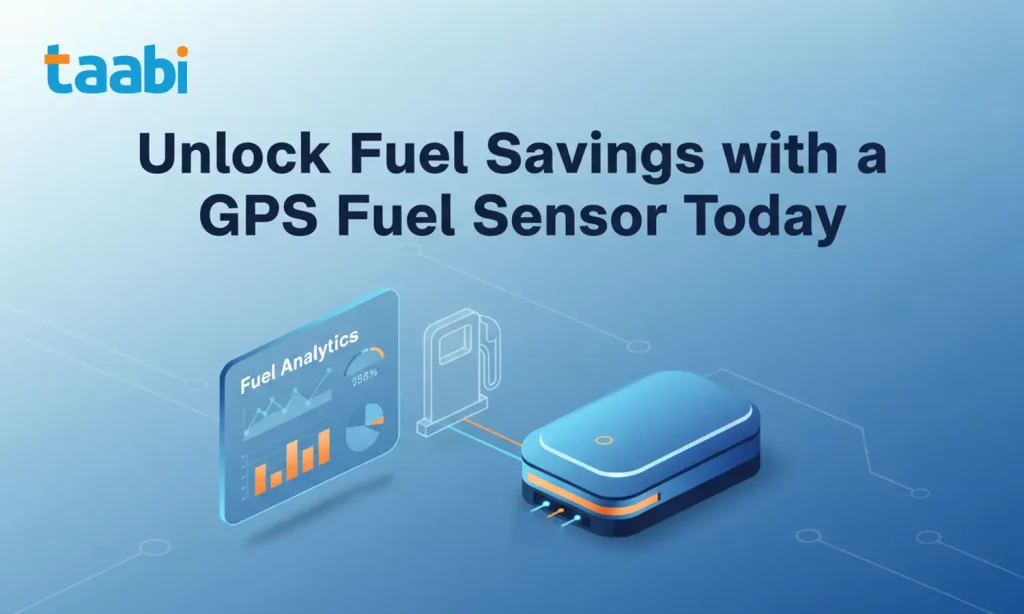Why a GPS Fuel Sensor Matters
A gps fuel sensor is a device that measures fuel level in the tank and simultaneously reports the vehicle’s location via GPS. When integrated into a telematics or fleet platform, it gives you insight into fuel consumption trends, alerts on sudden drops, and helps detect fuel theft.
By combining fuel data with positional context, you can see whether unexpected fuel usage occurred during driving, idling, or while parked. This approach is more powerful than a standalone fuel monitoring system where you see where fuel was lost, not just how much. For example, Samsara’s telematics offerings allow coupling of fuel data with routing, vehicle diagnostics and driver behavior.
Some systems even allow integration of fuel card transaction data, so you can cross-verify whether a fuel purchase aligns with the GPS location at the time.
A gps fuel sensor is an enabler of efficiency, theft control, and smart decision-making for fleets.

How GPS Fuel Sensor Integrates with Fleet Systems
Modern fleet management systems provide a unified platform combining:
➤Real-time GPS tracking — you see location, speed, stops, idling.
➤Fuel level / fuel consumption analytics — trend graphs, consumption per mile, idling costs etc.
➤Alerts & anomaly detection — rapid fuel loss, unauthorized refuels, fuel drain alarms.
➤ Vehicle diagnostics & maintenance insights — poor engine health or suboptimal maintenance often leads to higher fuel consumption.
In essence, a gps fuel sensor becomes one component of a gps fuel monitoring system. It works best when the sensor reports into a platform that can correlate fuel and location data, trigger alerts, produce reports, and allow managerial oversight.
Benefits You Can Realize
➤Fuel savings & optimization — by analyzing routes, idling, driver habits.
➤Theft & fraud control — alerts when fuel drops abnormally in short periods, or fuel transaction location mismatches.
➤Accountability — drivers know fuel data is monitored, reducing misuse.
➤Data-driven decisions — route redesign, vehicle replacement, driver training.
➤Reduction in downtime & maintenance costs — catching leaks or fuel system problems early.
When linked to fleet telematics, a gps fuel sensor helps you shift from reactive to proactive fuel management.
Implementation Tips & Considerations
➤Choose accurate sensors — target ≥ 99% accuracy, robust against vibration, moisture, temperature fluctuations.
➤Seamless integration — ensure the sensor works with your telematics or fleet platform, whether via API or native compatibility.
➤Secure installation — limit tampering by placing modules discreetly and securing cabling.
➤Alerts & thresholds — set rules for rapid drops, refuel limits, or unexpected patterns.
➤Driver buy-in — train drivers and explain the purpose is efficiency and fairness, not just oversight.
➤Pilot & scale — deploy initially in a small sample of vehicles to test reliability and data usefulness before fleet-wide rollout.
Conclusion
If you want to cut fuel cost, reduce theft, and gain visibility into every drop used by your fleet, a gps fuel sensor is a compelling solution. When combined with a full fleet fuel tracking or gps fuel monitoring system, it gives you not just raw fuel numbers but geospatial context, alerts, and analytics to act on. Use proper installation, calibration, and ongoing verification to extract maximum value. The future of fuel savings begins with seeing exactly where, when, and how your fuel is spent.
FAQs
A “fuel map sensor” is sometimes used informally to refer to a fuel level sensor or system that maps fuel levels over time. It indicates where in a route or timeline fuel was used, refuelled or lost. In many systems, the gps fuel sensor and its data over time create that fuel map automatically, allowing you to trace fuel level relative to geographic location.
To check a fuel sensor:
- ➤Calibration test — compare sensor readings with manual measurement (dipstick) under static conditions.
- ➤Consistency check — see whether readings fluctuate too much while driving; excessive noise or erratic jumps may indicate malfunction.
- ➤Diagnostic logs — many fleet systems track sensor error reports or signal irregularities.
- ➤Maintenance & cleaning — ensure the sensor float, wiring, or probe is clean and intact.
- ➤Cross-verify with fuel receipts or other telemetry — if fuel purchases don’t align with sensor data, that suggests sensor fault or tampering.
Frequent verification is prudent to ensure your gps fuel sensor remains accurate.








